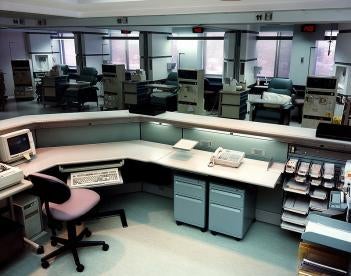On June 13, 2016, the French Conseil d’État (supreme administrative court) referred to the EU Court of Justice (“CJEU”), the question of whether medical software that provides support to healthcare professionals in prescribing medicinal products should be considered a medical device under Directive 93/42 (the “Directive”) (Case C-329/16). The qualification of software as a medical device has important consequences and often depends on a complex and very facts-based assessment. The CJEU’s ruling may help to clarify how to apply the existing regulatory criteria on the qualification and classification of software as a medical device.
Facts of the Case
The case concerns software that supports healthcare professionals in prescribing medicinal products. French legislation imposes a certification obligation for this type of software. The Haute Autorité de santé (High Health Authority) will only issue the certificate after it verifies the software’s compliance with a relatively long list of national requirements, aimed to ensure proper and efficient prescribing. The applicants before the Conseil d’État submitted that the Decree (2014-1359), which implements the certification obligation, violates, among other rules, the Directive. They argued that the Directive prohibits Member States from creating obstacles to marketing within their territory those devices that bear the CE mark and comply with the Directive’s requirements.
The case of course depends on whether or not the software is covered by the Directive. Therefore, the Conseil d’Etat decided to stay the proceedings and ask the CJEU whether the medical software constitutes a medical device as defined in Article 1(2) of the Directive.
The order for reference does not provide much detail on the precise functioning of the software concerned. It describes the software as follows (our translation from French): “The software aims to support [healthcare professionals] in determining the medical prescription, in order to improve the safety of the prescription, facilitate the work of the prescriber, encourage conformity of the prescription with national regulatory requirements and reduce the cost of treatment at an equal level of quality.” The order also suggests that the software consists of multiple modules or functions, where at least one function permits the use of data specific to a patient to help the doctor issue a correct prescription, in particular by detecting contraindications, drug interactions and excessive doses.
Relevance of the Judgment
The judgment will help to clarify the criteria for the classification of software as a medical device. The definition of medical device in the Directive confirms that software could be a medical device, but only if several conditions are met. The past few years, we have seen an increase in regulatory guidance on this topic. Most recently, the MEDDEV guidance on the qualification of standalone software used in health care was updated (July 2016, see post here), and the European Commission’s Manual on Borderline Decisions also discusses specific examples. Only a few weeks ago, the UK’s Medicines and Healthcare products Regulatory Agency also updated its guidance, which contains an interactive decision tree to help manufacturers understand whether their software is a medical device or not.
Despite all these tools, many questions remain.
Key Questions
It is expected that by assessing an actual example, the CJEU will answer at least some of the questions that remain concerning the classification of medical software. Below we outline a few observations on the possible outcome of this case. Note, however, that the CJEU could decide to reformulate or otherwise clarify the preliminary question, which may have an impact on our analysis.
The outcome of the case will most likely hinge on the specific functions and capabilities of the specific software at issue. Indeed, the precise function of software or one of its modules is key to determining whether it is a medical device according to the MEDDEV decision tree (see page 9-12 of the guidance). Here, it seems beyond doubt that the product at issue is software as defined by the MEDDEV guidance, that is, a set of instructions that processes input data and creates output data.
Key questions are:
-
Does the device “perform an action on data” or does it perform “an action limited to storage, archival, communication, simple search or lossless compression.” According to the MEDDEV guidance (step 3 of the decision tree), software could be a medical device if it is intended to create or modify medical information, if such alterations are made to “facilitate the perceptual and/or interpretative tasks performed by the healthcare professionals when reviewing medical information,” e.g., software that supports a clinical hypothesis by applying classification, segmentation, or pattern recognition techniques to medical images.
-
If so, is the action of the software used for the evaluation of patient data to support or influence the medical care provided to that patient (step 4 of the MEDDEV decision tree)? Based on the facts available, it seems rather likely that this condition would be fulfilled.
-
If so, is the intended purpose as described by the manufacturer to “diagnose, prevent, monitor, treat or alleviate disease”? Indeed, the final step of the MEDDEV guidance focuses on the intention of the manufacturer. If the intention is to “diagnose, prevent, monitor, treat or alleviate disease” the product qualifies as a medical device regardless of what it is called. The Court may need to examine the product information and labeling in order to determine its intended purpose. In the Brain Products case (C-219/11), the CJEU confirmed that for software to qualify as a medical device, it is not sufficient that it be used in a medical context. Rather, the intended purpose must be specifically medical.
In the past, the CJEU has also taken account of EU guidelines, including MEDDEV guidance, when interpreting the Directive.
In its order for reference, the Conseil d’Etat also underlined that the software at issue does not achieve its action in or on the human body. This factor is usually linked to the question of whether a product has pharmacological effects, in which case it may qualify as a medicinal product. This passage in the referred questions will probably not be relevant.
The CJEU will likely render its judgment during the 2nd or 3rd quarter of 2017.





 i
i

